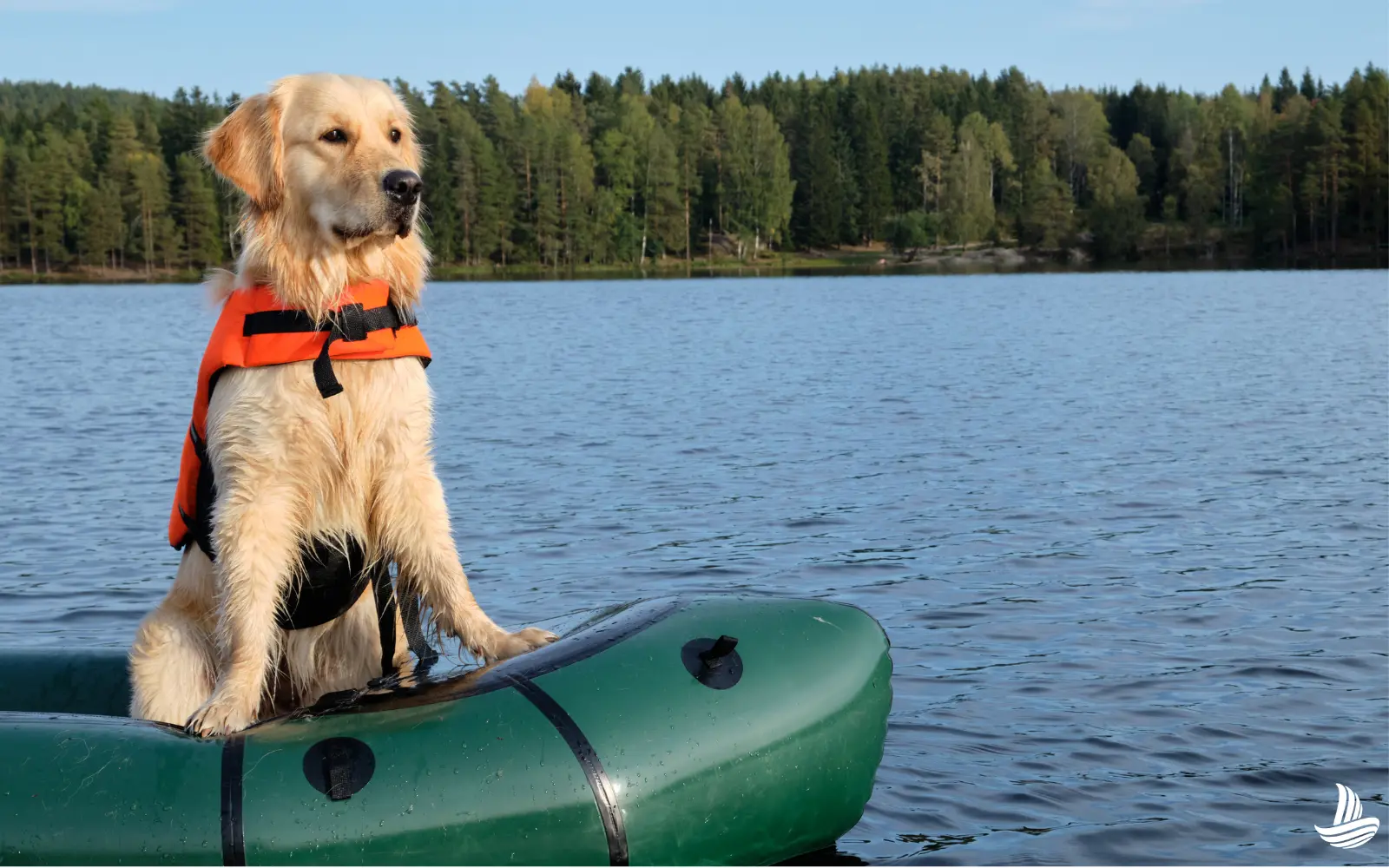Captain Jeff and I were chatting with a potential partner the other day (check out BoatXShare if you haven’t yet), and they said something that stuck with me — Argo could be doing even more to help make boating safer for everyone. There’s a saying that boating rules are written in blood, and sadly, recent accidents — including collisions and drownings — prove it’s true. Safety on the water isn’t something to take lightly.
So I wanted to share some simple things you can do every time you hit the water to keep yourself and others safe. If you haven’t tried Argo yet, it’s a free marine navigation app my dad’s been building for the past few years. You’ll see it in action in these tips.
About the Author:
I like to joke that I’m a “passenger princess,” and it’s true — I haven’t spent much time at the helm. But I’ve been on countless outings, seen firsthand how things can go wrong, and learned the hard way about mistakes like forgetting the drain plug, underestimating wave heights, or staying out after dark without working lights.
That’s why I asked Dave Rowe to help with this guide. Dave has logged thousands of nautical miles, cruised America’s Great Loop, and lived aboard his Bayliner 3870 Stinkpot full-time since 2018. With years of real-world experience in all conditions, he knows the safety habits that keep boaters out of trouble — and bring them home.
1. Life Jackets: Your Best Mate
No matter how many times you’ve crossed the bay or how calm things look, life can throw you a curveball in a heartbeat. A life jacket isn’t just some piece of fabric—it’s what stands between you and a very bad day. I’ve seen good people lose their footing and end up in cold water with nothing to hold on to—especially during those crazy races when adrenaline’s high and safety slips the mind.
Kelly’s advice: Always have life jackets on board—no excuses. Make sure the little ones wear theirs at all times. Got a furry friend who can’t swim? Zip them up in a doggy life jacket too. Argo’s got your back with a pre-launch checklist that puts life jackets right at the top.
2. Weather, Currents, Tides: Respect the Water’s Whims
The water doesn’t care if you planned a relaxing day out—it’s fickle and changes in the blink of an eye. I’ve made the mistake of heading offshore without checking wave heights, and let me tell you, those inlets got downright scary. And don’t forget about currents and tides—they can strand you high and dry faster than you’d expect.
Dave’s Advice:
- Wave conditions: In the open ocean wave period (distance between crests) is also important. Rule of thumb for me (on my larger boats) is that the period in seconds should be at least double the wave height in feet. Four footers are not bad at all if there is 20 seconds between the crests.
- Rule of thumb in inlets: Avoid wind against tide. That’s when inlets get hairy. So if the wind is out of the east, and the tide is going out in NJ, wait until the flood tide (or vice versa).
Kelly’s advice: Before you go, check Argo. The chart shows tide and current markers that clue you in on what’s happening out there. And don’t stop there—take a peek at the 7-day forecasts for wind, weather, tides, and wave heights for your area. Being ready means you won’t get caught off guard.
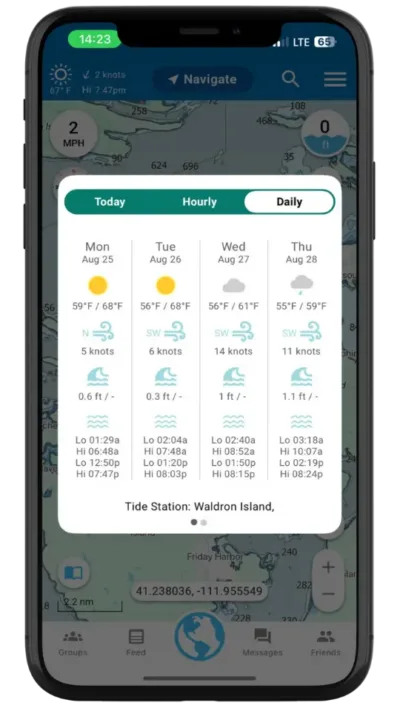
3. Navigation Lights: Let Others See You Coming
Nothing screams “danger” like cruising around after dark without your lights on. I once had a boat sneak right past me at night with no lights—nearly gave me a heart attack! Without navigation lights, you’re just a floating target in the pitch black.
Kelly’s advice: It’s easy to skip checking your lights (both onboard and handheld) if you don’t plan to stay out late, but weather and delays don’t care about your plans. Argo’s pre-launch checklist makes sure this vital step doesn’t slip through the cracks.
Dave’s Advice: For more information about nighttime safety, see my article on overnight cruising.
4. No-Wake Zones: Slow Your Roll to Save the Shore
No-wake zones aren’t just polite requests—they’re there to protect fragile shorelines, property, other boats, swimmers, and local wildlife. Ignore them, and you might find yourself facing the angry looks—and fines—of local rangers and neighbors.
Dave’s advice: Don’t forget that everyone is legally responsible for any damage caused by the wake of their boat, whether they are in a no-wake zone or not.
Kelly’s advice: Look for Argo’s No-Wake Zone markers to see exactly where these slow-down areas are before you get there. Planning ahead means you can keep the peace and protect the places we all love.
5. Plan Your Route and Tell Someone
Smoke signals and hand-written plans could work, but there’s an easier way now-a-days. You can plan your route in Argo and email/text/share it within the app to someone on dry land. Make it a habit to plan your route ahead of time on Argo’s web app and share it with someone you trust. Maybe make it a habit to share it right after you save it to your Captain’s Log.
There is also a PDF link to the USCG Float Plan form under the Boat Safety & Education section in Argo that you can download, fill out and share with friends for this purpose.
Kelly’s Advice: Regardless of what method you choose, always tell someone where you’re headed. It could save your life.
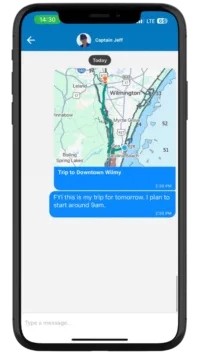
6. Share Your Current Location — Don’t Be a Ghost on the Water
You’re out there enjoying the sunshine, but remember: people ba
ck home care about you. With Argo, you can add friends so they see your live location (if you let them). Every time you open the app, they’ll see your little icon moving across the charts in real time. Sharing your location isn’t just smart; it’s peace of mind for everyone who cares about you.
This advice goes both ways. Are your kids taking your boat out for the day? Have them share their location with you as well.
Kelly’s advice: Add family or friends in the app and share your location. This way they’ll know you’re safe—or can send help fast if you’re not.
Learn how to add friends and share your location.
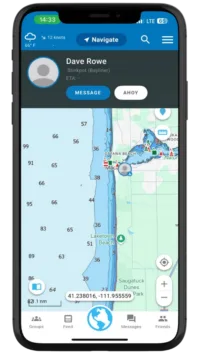
7. Emergency Contacts — Be Ready for Anything
When things go sideways, the last thing you want is to be scrambling for phone numbers. Argo comes loaded with key emergency contacts like the Coast Guard, TowBoatUS, and SeaTow—ready to call with a tap. You can also add your own go-to contacts—local marinas, your fishing buddy, and anyone else you trust. Click here to learn where to find the emergency contact numbers in Argo.
Kelly’s advice: Open Argo now and add a few local emergency numbers. Trust me, if something goes wrong, you won’t have time to hunt them down.
8. SOS Pin — A Modern Distress Signal
If things go sideways, Argo’s SOS pin is like waving a big red flag—nearby Argo boaters will see it and can get to you fast. Someday soon, it might even ping the Coast Guard directly.
But in a real emergency, your first move should be to get official help rolling: press the DSC emergency button on your VHF radio (if it’s set up) and make a distress call on Channel 16. See the detailed VHF distress call protocol below to be ready before you need it.
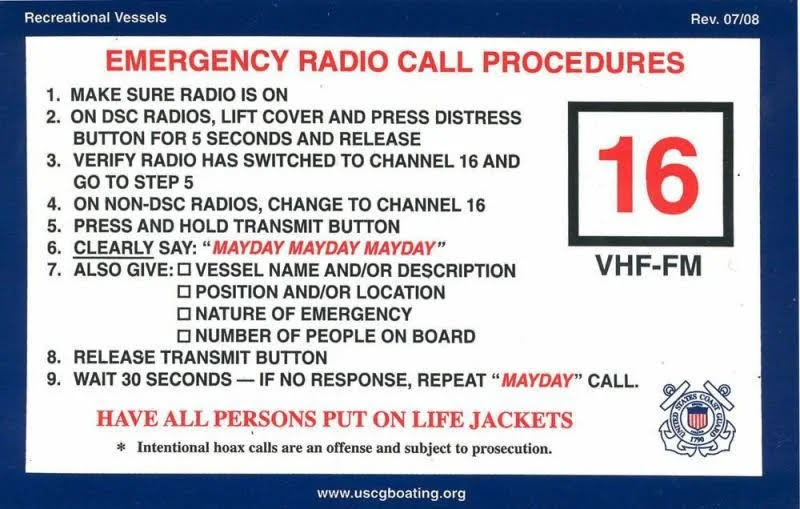
No radio? Call 911 on your cellphone as mentioned in Tip #7. Once you’ve done that, drop your SOS pin so fellow boaters nearby know where you are. Nothing beats a direct call for kicking an emergency response into high gear.
Kelly’s Advice: Don’t hesitate to use every tool you’ve got—they’re there for your safety and the safety of those depending on you to bring them home.
9. Pre-Launch Checklist — Don’t Be That Guy
Forget the drain plug once, and you’ll never forget it again—trust me. Same goes for anchors, flashlights, navigation lights, and fuel levels. Skipping a check can turn a fun day into a rescue story. Learn how to use Argo’s checklist feature so you never leave the dock without the essentials.
Local USCG Auxiliary Groups also offer free boat safety checks all the time for anyone unsure of the requirements. It’s a great resource for newer boaters, and over time you’ll likely get comfortable handling the checklist on your own.
Kelly’s Advice: Pull up Argo’s default checklist now and add anything unique to you and your boat. A few minutes of prep beats hours of regret.
10. Know Your Limits — The Water’s Not for Showing Off
Even the best boats and gadgets can’t save you if you bite off more than you can chew. Know your skills, know your boat’s limits, and respect the water. Argo’s detailed charts and hazard warnings can help steer you clear of trouble, but nothing replaces good judgment, local knowledge and experience.
Kelly’s Advice: Better to live another day than to push it and end up calling for help. The water doesn’t care how confident you feel—it plays by its own rules.
Final Word from the Helm
Boating’s one of life’s greatest joys—but the water demands respect. Argo can give you the tools, the charts, and the alerts, but real safety still starts with you: your judgment, your habits, and your readiness. Not to mention your situational awareness. Those skills don’t appear overnight—you build them trip by trip, lesson by lesson.
If you’re new to boating, or want to sharpen up, take a Basic Boater Safety Course—online or in person. Groups like the U.S. Power Squadrons and NauticEd offer solid training that can make all the difference when it counts.
Here’s to many safe adventures ahead!

